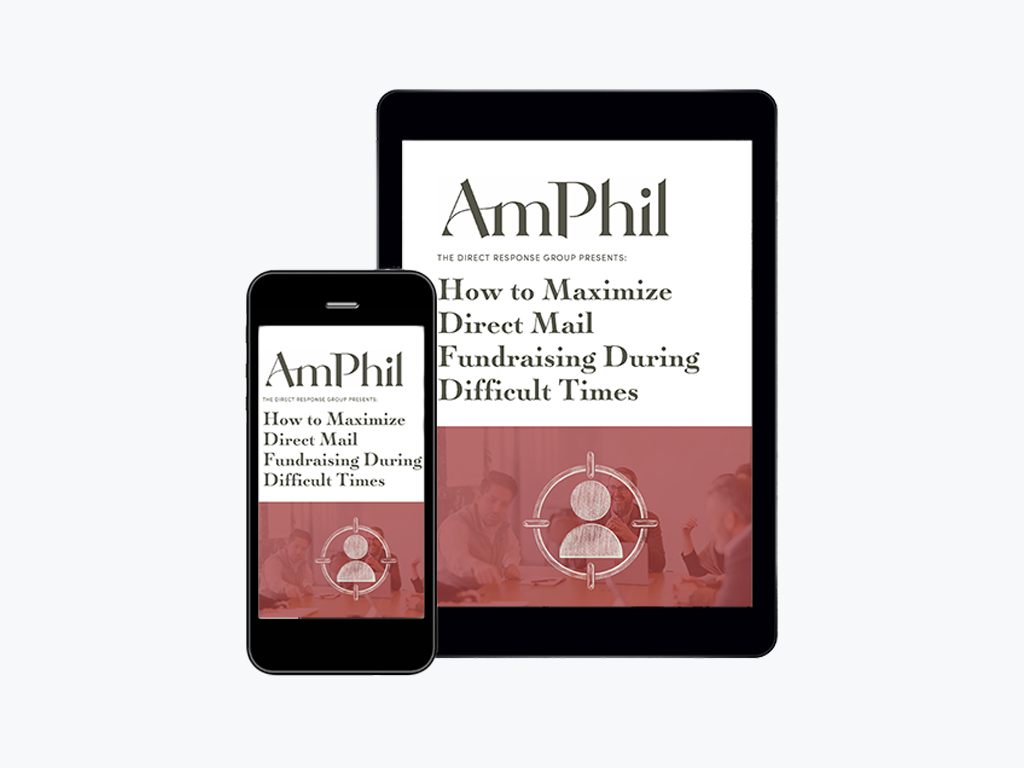
Communication involves so much more than just words. About 90% of interpersonal communication is nonverbal. When communicating with donors through emails, letters, or newsletters, an entirely mechanical form of communication, you’re losing a whopping 90% of your capacity to connect with your donors, right? Wrong.
You’ve got a great letter written. Fantastic. But not everything that you say is in what you say—in many ways, the medium is the message. Think about it this way: We judge people every day based purely on their appearance. That’s why you follow a police officer’s directions during a parade or rally. The officer doesn’t shout that he’s the “Police!”; his uniform does it for him. It’s the same reason Colgate slaps a lab coat on some shmuck and tells you that four out of five dentists recommend their revolutionary toothpaste that injects fluoride directly into your gums. The lab coat tells you, “I’m a scientist who wanted to work on mapping the human genome but ended up shilling for the dental industry.” Or, you know, something like that. The point is that we respond to signals in messaging.
Back to my broader point: How a message comes to us is as important as what that message is. So, while what you’re saying may be great, let’s make sure your methods aren’t robbing your returns. Here are four key elements to separate your wheat from the competition’s chaff when communicating with donors:
1. Eye-Catching Carrier Envelopes
This is the first thing your donor will see when you send a letter. In the nonprofit world, we never truly know if an envelope gets opened. We only know if a donor responds. But that response is predicated on a chain reaction of events that is nipped in the bud if the carrier envelope drives them off.
- Don’t send windowed envelopes. Yes, they're cheaper, but windowed envelopes are used for city water bills and by the IRS (not exactly what you want coming to mind when your donor sees your letter).
- Go easy on the teaser text. Plastering “Your donation will save the world!” across the front of your envelope may entice some people to open it, but is that sort of shrieking opener what you want to build relationships on? In my experience with teaser texts, less is more.
- For envelopes, bigger is better. 6x9 or 9x12 envelopes perform better than the standard #10 envelope everyone sends. Why? Bigger captures the attention and stands out in a positive, non-clownish way.
In the trade, the “Mystery Manila” is a classic carrier envelope that routinely performs better than other versions. Forget the statistics, though, and ask yourself, when is the last time you didn’t open a manila envelope you got in the mail? Donors live busy lives, and, like all of us, they look for areas to cull wasted time. Don’t give them any reason to lump your letter in with everyone else’s.
Takeaway: A classy envelope communicates that you’re a cut above the rest. Don’t treat your donors like just another donor and they won’t treat you like just another nonprofit.
2. First-Class Postage
Nonprofit postage is cheaper than mailing first class, but should you use it? If you can reasonably afford first-class postage, you should consider it as its response rates are noticeably higher, as are average first gifts.
If you can’t afford first-class postage for every donor, prioritize. Start with board members and donor club members, then donors who give $1,000 or more. As your mailing budget grows, increase the number of donors who get first-class postage.
Takeaway: A first-class stamp communicates that you value a donor relationship enough to treat them like someone you'd send a personal letter, not a name on a bulk mailing list.
3. Personalized Communications
Personalized letters overwhelmingly outperform the competition. Build a donor database that allows you to address your donors by name. Don’t be that guy who goes around slapping people on the back while calling them “pal” and “buddy”—the message that conveys is: “You’re not worth my time, Chum.”
Takeaway: Make sure your donor knows that you've taken the time to learn their name.
4. Longer Letters
Once again, bigger is better. And I don’t mean four pages—try ten or twelve.
I know it sounds ridiculous. I just said donors are busy, and that’s true. But at the end of the day so much of my client’s caterwauling about page length is along the lines of “Our donors don’t want to hear from us” or “We don’t want to bother them.” That’s a deadly mindset. Your donors give to you because they appreciate what you do. What’s more, they go to work every day and give you their hard-earned money to champion your cause.
Takeaway: Your donors want you to succeed, and they want to be a part of that success! Send them a letter that shows them what their generosity is enabling you to accomplish.
Communication is more than just what you say. It is how you communicate. Donors want to feel special, valued, and understood. How you show that is up to you, but remember: the medium is the message.
About the Author
 Devon Ironside is the Director of Data & Technology for AmPhil and helps nonprofits and mission-driven organizations strategize, execute, and sustain nonprofit technology solutions that empower them to advance their mission. He is an expert on the Virtuous responsive fundraising CRM and a Certified Salesforce Administrator and specializes in database strategic consulting, holistic development process integration, and system change management.
Devon Ironside is the Director of Data & Technology for AmPhil and helps nonprofits and mission-driven organizations strategize, execute, and sustain nonprofit technology solutions that empower them to advance their mission. He is an expert on the Virtuous responsive fundraising CRM and a Certified Salesforce Administrator and specializes in database strategic consulting, holistic development process integration, and system change management.
Since beginning his professional career with AmPhil, Devon has personally managed several dozen client engagements ranging from database builds and migrations to post-live support. Under his direction, the Data and Analytics team has provided solutions for clients ranging from $1MM to $100MM+ in annual revenue, and he has managed the onboarding and training of hundreds of staff at nonprofits across the world.
Devon studied History at Arizona State University, where he also served as a Fellow with the Center for Political History and Leadership. He is originally from Canada.
Connect with Devon on LinkedIn here or contact him anytime at dironside@amphil.com.


